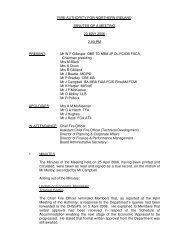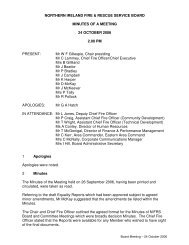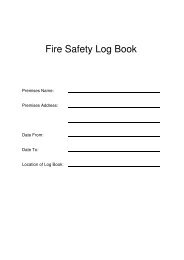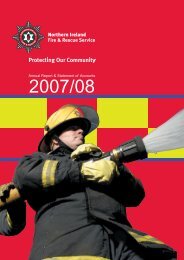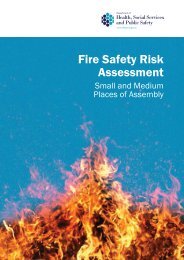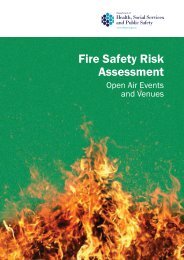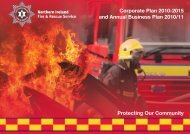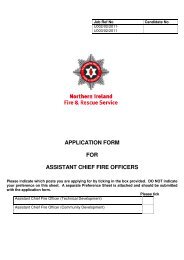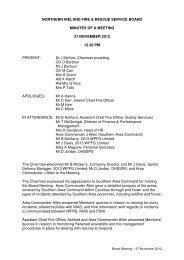A Guide To Reducing The Number Of False alarms From fire
A Guide To Reducing The Number Of False alarms From fire
A Guide To Reducing The Number Of False alarms From fire
You also want an ePaper? Increase the reach of your titles
YUMPU automatically turns print PDFs into web optimized ePapers that Google loves.
• welding, soldering or similaractivities;• candles and open <strong>fire</strong>s;• steam;• dust;• aerosols; and• a lack of effectivemaintenance and cleaning.Heat detectors<strong>The</strong>se are generally used in kitchens, boiler rooms and similar areas wheresmoke detectors may be too sensitive and cause false <strong>alarms</strong>. <strong>The</strong>y areset to allow for expected temperature levels in the protected area, andwill trigger an alarm if the temperature goes above the expected level.<strong>False</strong> <strong>alarms</strong> may be caused by high temperatures in the protected area,or sudden increases in temperature.Break glass boxes‘Break glass’ boxes do not usually cause false <strong>alarms</strong> as a result of faultyequipment. However, the glass can be broken deliberately or by accident.If you think there is a high risk of this because of vandalism or where thebox is, they can be fitted with a transparent flap or cover that has to belifted before the glass can be broken.<strong>The</strong> actual cause of a false alarm may be easily identified and corrected.For example, if the cause is something someone has done (such as dustcoming from maintenance work), you can take action to prevent thisfrom happening again. However, you may need to take a more formalapproach to analysing the cause of the false alarm.8




